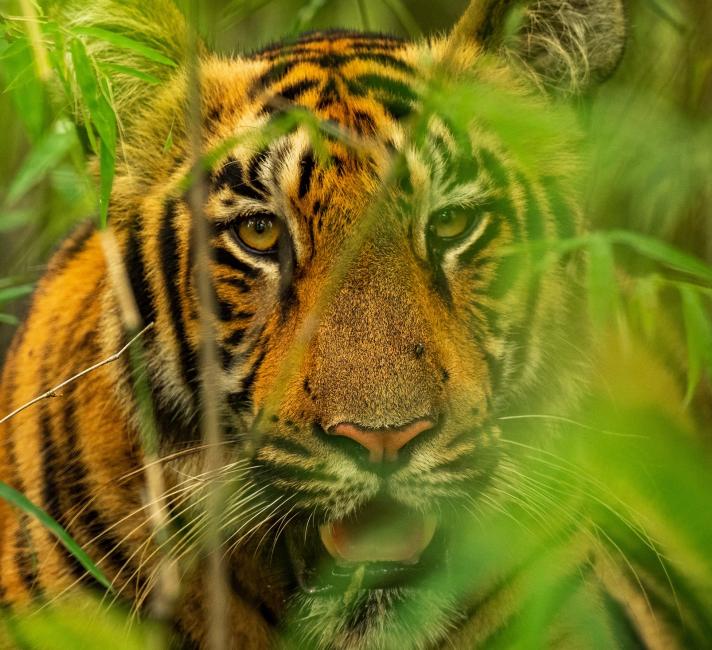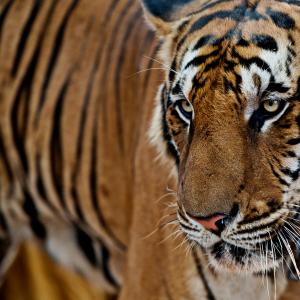
Tiger reserve in India doubles its tigers while the big cats reach record heights in Nepal
What was the issue?
Just 10 years ago, wild tigers were heading towards extinction. At the start of the 21st century there were an estimated 100,000 tigers in the wild. But in 2010 global tiger numbers in the wild hit an all-time low of as few as 3,200 individuals and their historical range had been reduced to just 5%. The world’s largest cat was becoming one of the rarest. Across their range, tigers face unrelenting pressures from poaching, conflict with people and habitat destruction and fragmentation.
What did we do?
Thankfully, though, things have started to turn around.
In 2010, the governments of all 13 tiger range countries came together at the world’s first ever global tiger summit and agreed a “TX2” commitment to double the number of wild tigers by 2022, the next Chinese Year of the Tiger. A global recovery plan followed and WWF – together with individuals, businesses, communities, governments, and other conservation partners – have worked tirelessly to turn this bold and ambitious conservation goal into reality. “The target catalysed much greater conservation action, which was desperately needed,” says Becci May, senior programme advisor for tigers at WWF-UK.
Tigers have since made an astonishing comeback in several countries including India, Nepal, Bhutan, and Russia. Nepal has almost doubled their wild tiger numbers since 2009, and, in some parts of India TX2 has been achieved. Nestled in northern India, in the Terai Arc Landscape, Pilibhit Tiger Reserve is one of the narrowest tiger reserves in India, while the surrounding areas support among the highest human population densities of all tiger conservation landscapes globally. And yet, the reserve managed to double its tiger population within a decade, to an estimated 65 individuals.
Meanwhile, in Nepal, a 2018 national tiger population survey estimated tiger numbers had increased from an estimated 121 individuals in 2009 to 235. And in Bardia National Park alone, the tiger population increased almost five-times from 18 estimated in 2008 to 87 ten years later.
There have been similar stories of success in the transboundary area of Manas Tiger Reserve in India and Royal Manas National Park in Bhutan, which more than doubled its tiger population. Together with Pilibhit Tiger reserve, these three protected areas received the new TX2 Award for their excellence in tiger conservation, which was supported by WWF.
Further, the record for the highest altitude tiger in Nepal was broken twice in the same year, providing evidence tigers are on the move. Early in 2020 a tiger was recorded in the far west of Nepal at 2500m, which was surpassed in November with a tiger recorded at 3165m in the far east of the country. At the heart of this range expansion are core protected areas, connected by corridors and the presence of adequate prey species in the wider landscape.
How did you, the supporters, help?
By supporting WWF-UK, whether that’s through a tiger adoption or a one-off donation to our tiger appeals, you are helping to fund critical work in important tiger landscapes in India, Nepal and China. In these tiger range countries, this support will help fund such work as camera trap monitoring and data analysis, strengthening protection against poaching, managing and reducing human-tiger conflict, and maintaining and improving habitat connectivity.
 Our success stories: what we've achieved together
Our success stories: what we've achieved together
 Top 10 facts about Tigers
Top 10 facts about Tigers
 Take our big cats (and dogs!) quiz
Take our big cats (and dogs!) quiz